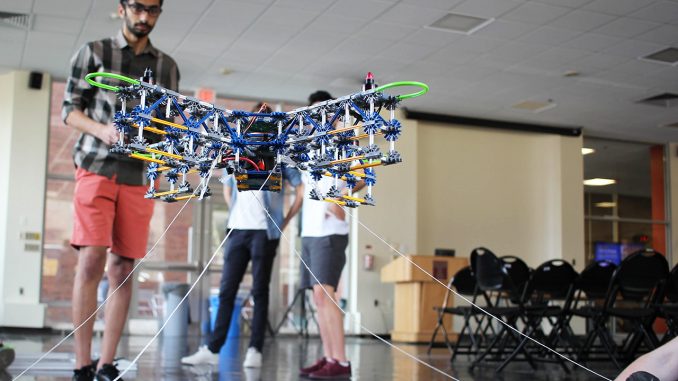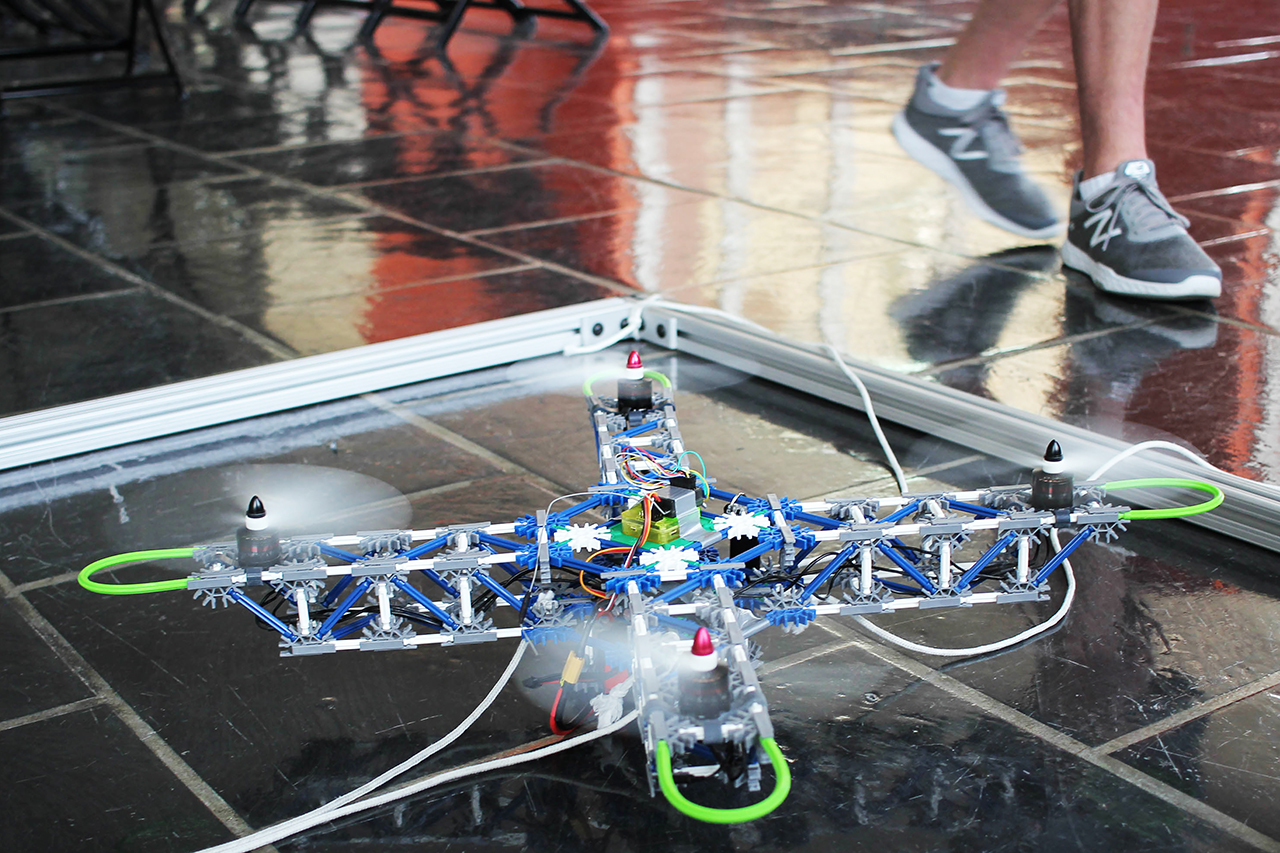
Before he sends $1,000 worth of equipment into the sky, James McHugh wants to ensure it will come down safely.
McHugh, a senior electrical engineering major, is constructing an autonomous, or self-flying, drone for his senior design project. Working alongside senior electrical engineering majors David Arnott, Jess Cohen and Jon Szynal, McHugh hopes to implement the technology to give self-guided campus tours for prospective students.
The plan was inspired by a similar drone project, “SkyCall,” that was conducted by the Massachusetts Institute of Technology Senseable City Lab in 2013. Researchers at MIT built an autonomous drone for guiding students around campus.
At Temple, the team had to dive into unfamiliar fields, like robotic operating systems and machine learning, that Arnott said aren’t heavily covered in the engineering curriculum.
“When you start your senior design project, you can take it two ways,” McHugh said. “You can stick with the stuff you know, stay safe and kind of just go from there, or you can try to dive into the stuff you don’t know.”
“Fortunately [and] unfortunately, that’s what we’ve been doing,” he added.
In order to build a drone that can fly on its own, McHugh said the team needed to utilize two different types of machine learning, a computer science field that uses statistical techniques to train computers to perform actions without human programming.
One form of machine learning, a convolutional neural network, is used to gather and store visual information from the two cameras attached to the front of the drone. The other method is called imitation learning, which refers to how the drone is trained through a series of tests to avoid colliding with obstacles like buildings and light posts.
Without flying the actual drone, McHugh said the group has performed tests using a simulator that reproduces a three-dimensional city environment. Through each test, McHugh said the drone improves its flying behavior based on the imitation-learning algorithm that he programmed.
On March 22, Arnott, McHugh and their project adviser, electrical and computer engineering professor John Helferty, attended a conference at Drexel University, “Philly in Flight,” which focused on the future use of drones in the city. Helferty said the Federal Aviation Administration is looking to establish “test bench” cities for incorporating drones in urban environments.
Currently, FAA regulations mandate that small drones always remain in the sight of the pilot or visual observer. They also cannot fly above people uninvolved in the operation of the drone, ruling out most practical applications in cities.

If these restrictions are lifted, Helferty said, it will spur innovation in both commercial and municipal projects. In Philadelphia, he said the Streets Department and the Pennsylvania Department of Transportation may be able to employ drones to assist in bridge inspections.
“Usually you got a guy out there with a pair of binoculars trying to look and see if the structure’s OK, or he’s got to strap on some gear and go climb that bridge,” Helferty said. “You’re getting a bird’s eye view [by using drones.]”
Before the senior design group can stage a drone flight on Main Campus, Arnott said they need to receive permission from the university’s Office of Risk Management and Treasury, which handles Temple’s insurance coverage and risk management procedures.
Arnott and McHugh added they won’t have a drone ready to give campus tours by the end of the semester. Having documented every step of their design process, they hope a new senior design group can take over the project next year.
Because the group focused this year on the more fundamental problems of building algorithms to train the drone, Arnott said the next group of students can tackle smaller problems, like programming the drone to obey traffic signals.
“Right now we’re just trying to get this thing in the air, but there’s a lot of things to take in account,” Arnott said. “Like if a person gets too far away from the drone, it should wait. We had a solution to that, but we didn’t have time to implement it.”
After graduation, McHugh said he’s excited to continue working on projects related to machine learning. Though neither he nor Arnott plan to work directly with drones, the pair said they’re excited to see new applications that go beyond basic package delivery.
“Once you have this creative option open, you’re going to find people doing crazy stuff with it,” Arnott said.



Be the first to comment